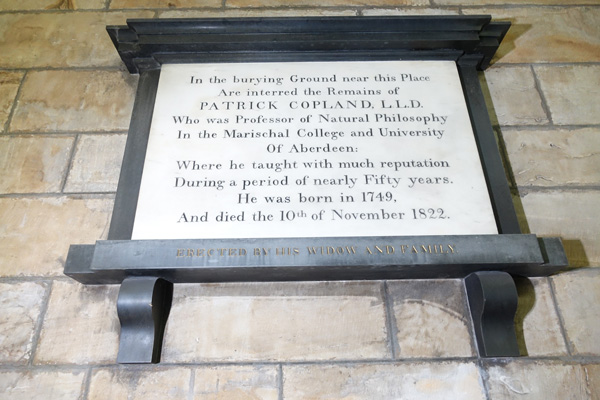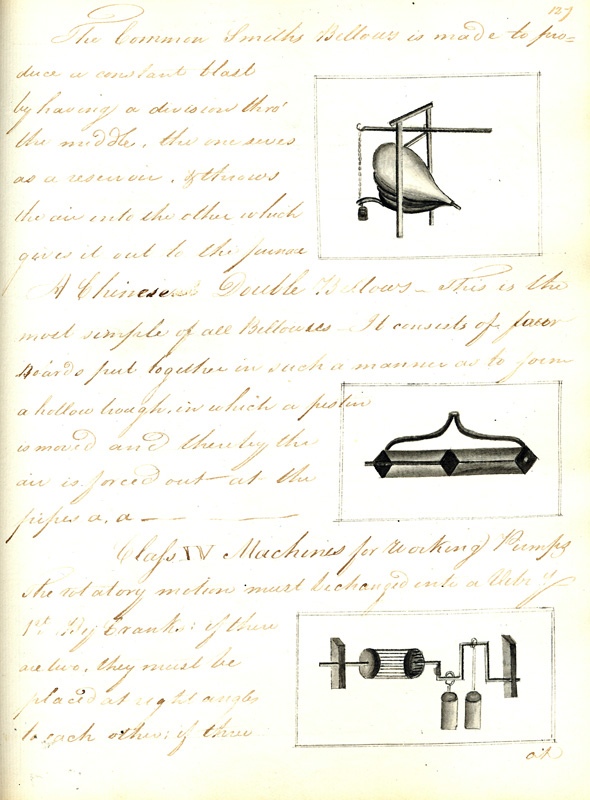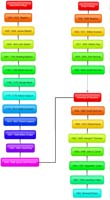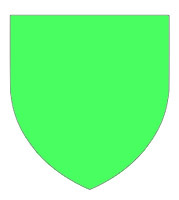| Professors of Natural Philosophy at the Universities of Aberdeen |
Dr Patrick Copland LLD FRSE 22nd Mar 1748 (OS) - 10th Nov 1822Copland's enthusiasm for lecture demonstrations has been alluded to in the earlier page on him. It is probably the most notable feature of his 47 years of teaching. Using working models and demonstrations had been part of the stock in trade of 18th century itinerant lecturers who offered an evening's educational entertainment in the towns they visited. Giving an entire University course illustrated by apparatus was the beginning of a trend that would last in the UK for about two centuries. It was a development that was frowned on by Cambridge and Oxford Universities well into the 19th century. The College gave an allowance of only 3 guineas a year to maintain the apparatus and Copland, as the son of a minister of the church, had no conspicuous private income. He of course had an income from his public lectures and an income from the pupils taking his course. Over the years he built up what was described in his lifetime as the most complete and extensive philosophical apparatus in the kingdom. He did this mainly by becoming a skilled craftsman himself equal to the best London artists according to one source. Thomas Young was particularly impressed when he visited Copland at Marischal College. Copland launched a successful public appeal for money to build and equip an astronomical observatoryJohn S. Reid "The Castlehill Observatory, Aberdeen" Jour. Hist. Astron., vol. XIII, pp 84 - 96 (1982). that was located in 1781 close to the centre of town on the Castlehill. Street lighting was dismal in those days so a good view and easy access were the most important criteria. The observatory can be considered the first public, or semi-public, observatory in the country to be equipped with modern instruments that included a Ramsden transit telescope, an equatorial telescope by Sisson & Ramsden, a polar-axis telescope by Dollond, a quadrant by McCulloch and Troughton, a refractor by James Short, a principal clock by Marriott of London and more, pretty well an inventory stocked from the very best makers of the day. Copland himself spent 7 months in London overseeing the acquisition of the instruments. Andrew Mackay was appointed a superintendent of the observatory, the same Andrew Mackay who featured in a contested application for a Professorship at King's College and who later became well-known for his 2-volume book on Navigation and his teaching of that subject. Regrettably the observatory had a short life, for the prominent site was taken over in 1795 by the Government as suitable for a barracks and the observatory re-located to the roof of the (old) Marischal College building that was demolished some 30 year later. Copland advised the Town on its water supply (for which he and Robert Hamilton were made Honorary Burgesses of Guild) and on weights and measures. He introduced chlorine bleaching to Britain and with Hamilton was a founder Fellow of the Royal Society of Edinburgh. Copland was friendly with local aristocracy and corresponed with James Watt, Thomas Telford and others. In appearance he was described by his successor, Professor Knight, as a tall and handsome man, always dressed in coloured clothes, and when young was regarded as the principal beau in Aberdeen. His figure, when gowned, was striking and commanding; his elocution ready but inaccurate. He read little, and had a disinclination to writing. He was a 'hands-on' man, happy in his workshop. He was also knowledgeable about music, for he was elected manager of the Aberdeen Musical Society in 1779 and built his own organ in the 1790s. Copland didn't marry until he was 39. They had three sons and a daughter. |
|
| Copland was a local character treated with wide respect and some awe. His funeral in November 1822 was described by one of his sons:
More than 200 students went first 4 × 4, followed by the professors who had not classes, and professors of K's Coll., the body, Dr M. & I, Mr D Milne & Mr Cock. The Company besides, were about 180. I never saw such a crowd looking at any funeral, the whole streets were filled and the windows. He was laid in the same grave with Dr and Mrs Gordon... The procession moved down Broad Street and up Union Street, entering the Churchyard gate in front of the Church. The company met at 2; we did not reach the church yard till after 3. The memorial plaque shown here was erected by his family in St Nicholas Church. His grave is outside, close to Union Street, but the inscription on the horizontal sandstone slab is now almost illegible. Further details on Copland and the full inscription can be found in The Scientific Tourist. |
 |
|
Page by John S. Reid Dec. 2017 |



